The Spirit of a Cowboy over Bandera
Conversation with Artur Owczarski, Director of the Documentary Film „The Cowboy Capital,” About the Residents of Bandera, Texas, Before the Screening at the Austin Polish Film Festival 2024.
*
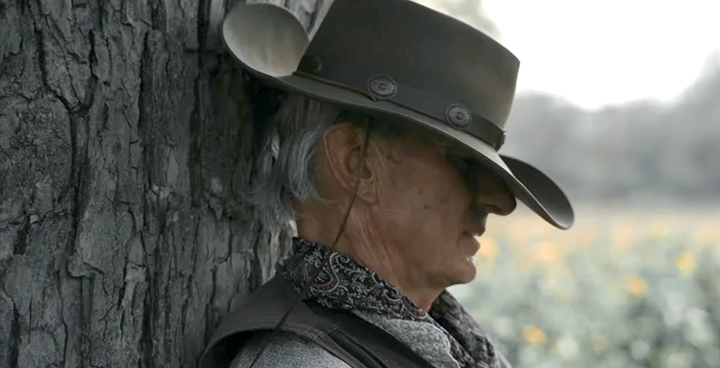
*
The interest in the film is enormous. The premiere took place in Bandera on July 20, 2023, at the 11th Street Cowboy Bar on a giant screen set up in front of the stage, where country music stars usually perform. On a hot Texas night, over 300 residents of the town gathered. The reactions were enthusiastic. It’s one of those events in my life that I will never forget. (Artur Owczarski)
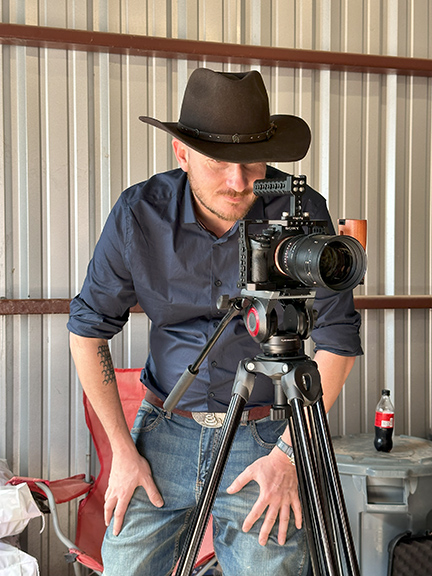
Joanna Sokołowska-Gwizdka:
You have traveled across the United States several times in search of people and their stories. You have reached forgotten towns and places with rich, though often lesser-known, histories. In your projects, whether books or films, you capture a world that may soon change. Where does your fascination with America come from?
Artur Owczarski:
At first, I discovered America as most tourists do. I explored large American cities and amusement parks in Florida. Later, I decided to travel Route 66. I’ve always liked being on the road. It’s the journey that matters, not the destination, as someone once wisely said. Traveling across America from Chicago to Santa Monica, I saw the American countryside. I had the chance to meet people who live in tiny towns. Time moves more slowly there, and their way of life embodies a different state of mind. After publishing my first book, which is partly a guide to Route 66, I wanted to meet more people who chose this way of life and ask them to share their stories with me. That’s how I started discovering Texas, traveling through it extensively. While preparing to write a book about Texas, and later while working on material for it, I met more and more people, some of whom have become very good friends over the years. It was the same when I worked on the book about Louisiana. Year by year, I became more immersed in the culture, and I don’t think that will ever change. I disagree with the idea that this world will disappear. There will always be people who reject the fast pace of big city life.
What interested you in the culture of the American Wild West?
Definitely the sense of freedom and independence. The legend of the Old West, as Americans more often call it than the Wild West, still lives in the hearts of people, especially in rural Texas. A commitment to family, responsibility, and a natural willingness to help neighbors is part of daily life here. Engaging in local community life and the natural desire to connect with other families are also very common. Just two months ago, at 11 p.m., I witnessed several neighbors from different directions come to help my friend save a sick horse. A few days later, they were all having a beer together at the local honky-tonk. During conversations with people, I was often asked whether, living in a big city, one even knows one’s neighbors, because if you live on a big ranch, even if your nearest neighbor is several kilometers away, you know their entire family and are always willing to lend a hand. Of course, this isn’t a perfect world. Like everywhere in the world, there are good and bad people, and there are tensions between individuals, but the question was about this way of life, and that, in my opinion, is fascinating.
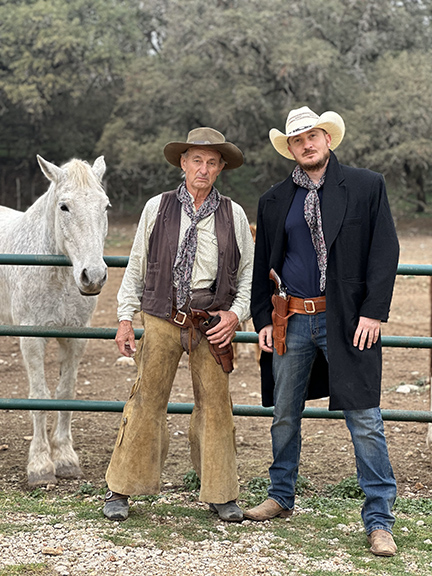
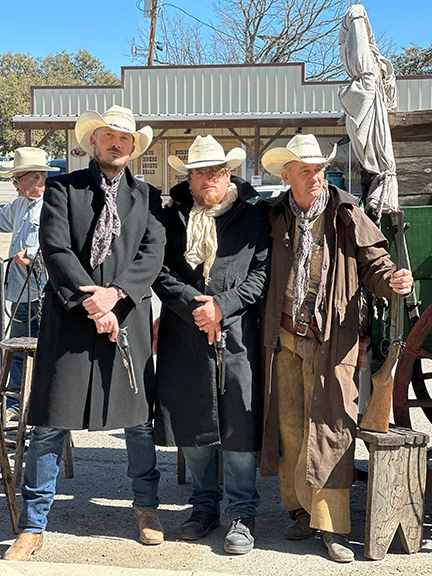
*
One of the places where residents continue to uphold cowboy traditions is the town of Bandera, Texas, which is the subject of your latest film, The Cowboy Capital. In Poland, we grew up on westerns, mass-produced by Hollywood. Were the legends of the Wild West one of the inspirations for your journey?
I grew up in Communist Poland, where Westerns were shown every Saturday. In addition to that, I read books that my father recommended to me. The legends of the Old West are part of global culture—still vibrant and appealing. Major productions set in that era are still being made, so you could say that everyone has seen at least one Western. While these legends weren’t an inspiration for me, I wanted to get to know American culture. After several years, I have to say that I had no idea how different the American mindset is from our European one. Even though both worlds are generally considered part of the 'West,’ they are completely different, and that’s fascinating.
What differences do you see between the image created by Hollywood and reality?
Hollywood creates myths, and while these myths are visually appealing, they are often heavily distorted. As one example, documents and records unequivocally confirm that before European settlers conducted large cattle drives in the Far West, such drives were already happening in Louisiana in the 18th century. Imagine thousands of cattle being driven through the swamps of Louisiana from its western parts to New Orleans by cowboys, some of whom were Black. Hollywood doesn’t show this, although we’ve seen in recent years that the Black community is increasingly emphasizing its contribution to the legend of the West and the cowboy myth. Films are being made, music videos by hip-hop artists are being produced, and Beyoncé has recorded a country album in Western style, and so on. That’s just one example. It’s fascinating that nearly every small town in the Desert Southwest has its own legends and true stories connected to that period. From California to Texas, these stories are still alive; they are part of the tourism industry, but more importantly, they remain ingrained in the cultural identity of the residents.
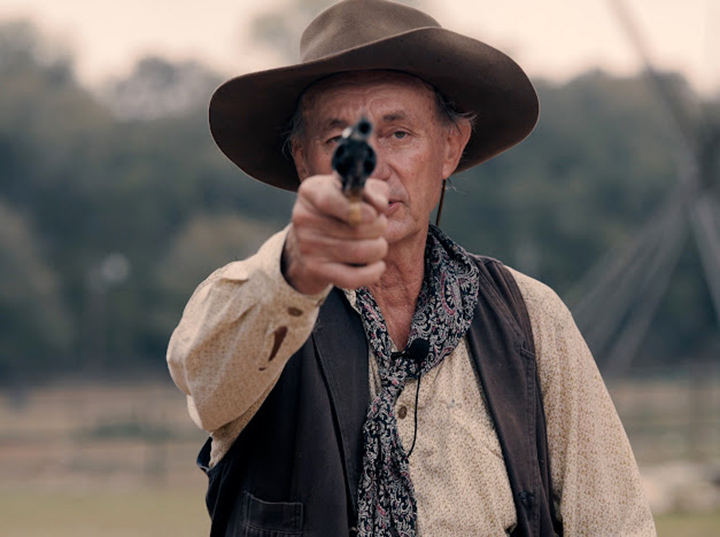
The characters in your film often emphasize that being a cowboy is not just about distinctive attire like hats or boots, but above all, it’s about an attitude toward life and a set of values. What are modern cowboys like?
A cowboy is a person, not a mythical figure. People are different, regardless of their profession. To be a cowboy, you have to love being outside, be willing to work very hard, and enjoy being around your coworkers. You sleep in a cowboy bunkhouse whenever you get the chance, wake up at 4 a.m., and take care of the animals. I know people of all genders who do this job. It’s a mindset, a life choice. It’s fair to say that they’re all tough.
In the film, Gaven Hauck—a rodeo rider—represents the younger generation of the cowboy community in Bandera. He upholds the traditions and values associated with ranch life. Do young people know how to embrace the future while preserving traditions?
Yes. Many young people raised on ranches tie their future to this way of life. Many also leave but return after a few years, appreciating the small-town atmosphere. Countless country songs talk about life in the countryside, attachment to the land, and the simplicity of ranch life. In one of my favorite songs, the artist mentions a teacher and a sheriff, singing that in his community, those are the „famous” people. Gaven is a rodeo rider, 18 years old. I met him when he was 14, and his only dream was to become a bull rider. It’s a passion and a dream that he pursues in a very professional manner. PBR (Professional Bull Riding) is a league associated with big money, full of riders, sponsors, and fans, and it even has its own dedicated TV channel. Gaven is very good at what he does, and he already earns more than his parents. He recently won a major competition in San Antonio. There are many young men like him in America, from Alaska to New Mexico, all dreaming of a world championship and, after their careers, living on a ranch. Many American entrepreneurs, after achieving success in business, buy a ranch and raise cattle. It’s the dream of many people.
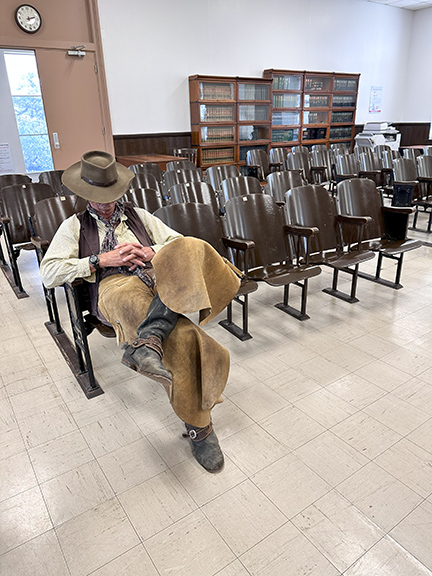
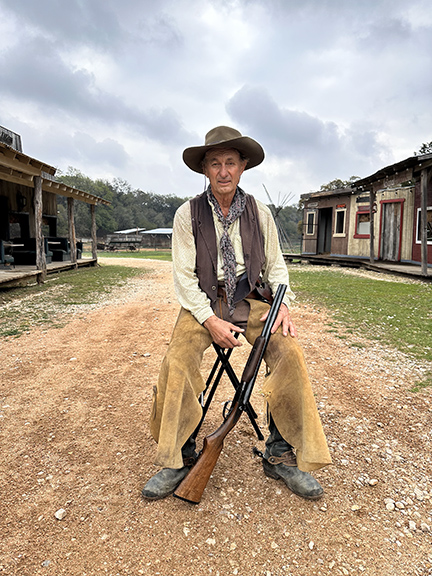
*
An interesting element of the film is that many of your interviewees have Polish roots. They are descendants of settlers who came to Texas in the mid-19th century with Father Leopold Moczygemba. Did you seek out the Polish connection, or did you come across it by chance?
The settlers came at the invitation of Father Leopold Moczygemba from the area around Strzelce Opolskie. While preparing to write a book about Texas, I came across information about the town of Bandera, which was built by several families from this migration. An interesting twist is that, thanks to the efforts of the late Eleonora Dugosh Goodley and others, Bandera holds the title of the Cowboy Capital of the World. It’s a beautiful contribution by Poles to the legend of the Old West and the cowboy myth. This story, or rather the contemporary image of Bandera, became an important part of my book. I’ve been going back there for years; I can’t count how many times I’ve been to Bandera. I have friends there and my own favorite places, and together with Dakota Wortman and Roy Dugosh, I created a film in which Bandera’s residents answer questions about what it’s like to live in rural America, why they wouldn’t trade this life for anything, who a cowboy is, and what freedom means to them.
Roy Dugosh, whom you mentioned, is a living legend of the cowboy world. Along with his sister, Eleonora Dugosh Goodley, he traced his roots and found out that their family was originally named Długosz and came from the town of Rozmierz near Strzelce Opolskie. What did this discovery mean to Roy, and did he feel a connection to being Polish?
Roy is not only a character in the film but also its narrator and co-creator, responsible for casting and set design. For many years, Roy was the head of Bandera’s historical commission. Along with his sister Eleonora and other residents, he frequently traveled to Strzelce Opolskie. For many years, groups of Silesians visited Bandera at their invitation. It was Eleonora who made Bandera and Strzelce Opolskie sister cities. Roy proudly emphasizes his Polish heritage. Their parents continued to speak Polish. He has spoken about this many times in both Polish and American media. Roy is passionate about history and actively promotes Bandera. He has been named Resident of the Year multiple times by the local Chamber of Commerce. On Saturdays, he and a group of friends perform historical reenactments for tourists, using blank ammunition.
But the Polish roots of Bandera’s residents are only one aspect of the film.
Yes, the story of immigration and Polish heritage is a small part of the film. We dedicated just a few minutes to it. We aimed to create a film about contemporary Bandera. What the audience might not know is that a large portion of Bandera’s residents, including some of the characters in our film, chose to live there. At a certain point in their lives, they decided to settle in Bandera because of its cowboy culture and traditional values. In Bandera, large retail stores are not allowed, billboards are forbidden, and the buildings must adhere to the traditional architecture set by the Polish settlers. The title of Cowboy Capital of the World enhances this process and draws the attention of people seeking such a lifestyle.
You’ve definitely succeeded in capturing the spirit of cowboy culture in the film. Was it difficult to tap into the sensitivity of your characters, to bring out their nostalgia and longing for bygone times?
When we finished the interviews, we had about 12 hours of footage. Aside from one, I conducted all the interviews myself. Some of the characters I’ve known for years, and they had already shared their stories with me when I was writing Texas is a State of Mind. Interviewing them made my job easier. However, I met many people for the first time while shooting the film. Watching these interviews later and discussing the editing with Dakota, I realized how privileged I was to be able to talk to people about such important topics. How often do we have deep discussions with friends, let alone strangers, about what freedom is? How do we define it? What is important to us in life? What values guide us? What discourages us about the modern world? These conversations were an incredible adventure, and I hope we find time someday to release each interview separately online. It will be a snapshot of Bandera and its residents in 2023, preserved forever.
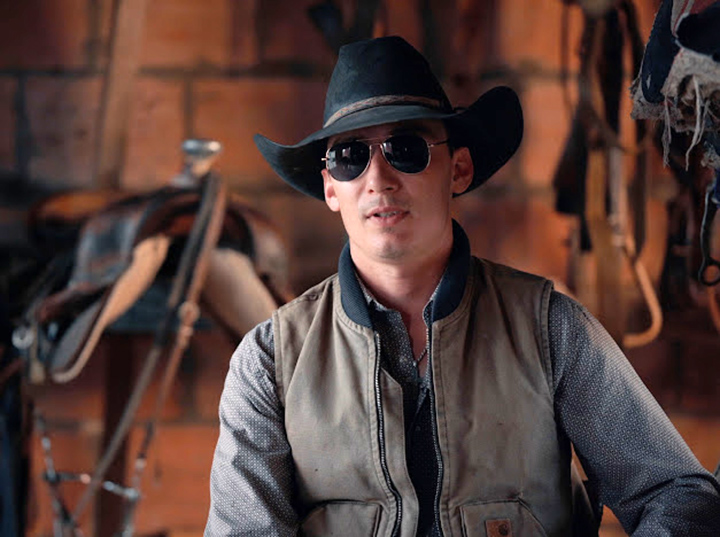
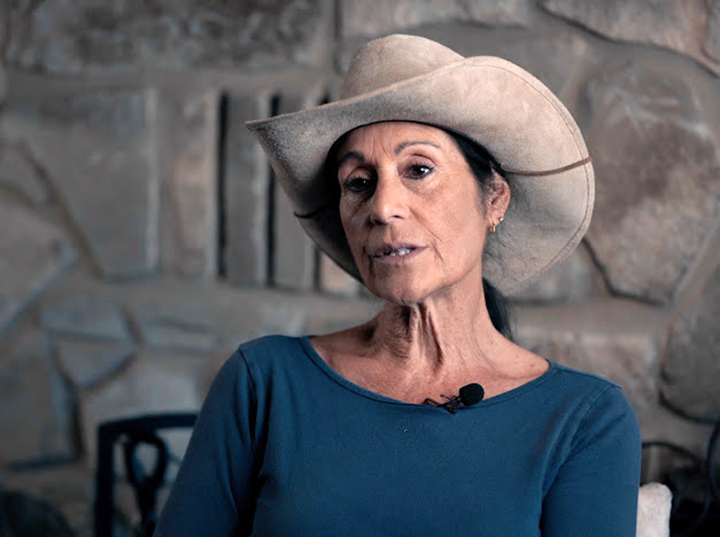
*
How was your collaboration with the local community? How did the residents react to the idea of appearing in a Polish film?
We didn’t encounter any refusals. The selection of characters was thanks to Roy, who is a well-known and respected figure in Bandera. We had a diverse group of people in front of the camera: an 18-year-old PBR (Professional Bull Riders) competitor, an over-80-year-old judge who has held office in the town for several decades, cowboys and cowgirls working on local ranches, ranch owners, the owner of the 11th Street Cowboy Bar (one of the most famous Honky Tonks in Texas), who worked for years at CNN and later in the music industry, a woman who raises ten horses by herself and runs horseback camps, and a local legend—incidentally, a Finn—who worked for Volvo in Helsinki before moving to Bandera with her husband. They now own dozens of horses, often saving them at auctions from being sent to slaughter, and they live off organizing horseback rides for tourists. Also featured is a famous sculptor who moved there from New York several decades ago and a Hollywood animal trainer from California, who, among other things, trained ostriches for the film Prince of Persia and worked with Viggo Mortensen on Hidalgo. He too decided to settle in Bandera. For several years, he ran a private rodeo where mules jumped into a pool through a flaming hoop from a seven-meter platform. Our characters are fascinating, colorful people from different parts of America and even Europe, who chose to live and shape contemporary Bandera because of their mindset.
In addition to the residents’ stories about their lives, their desire for freedom, and their choice to live in harmony with nature away from the hustle and bustle of city life, nostalgia is a recurring theme throughout the film. What stylistic devices did you use to give these lengthy conversations a metaphysical dimension?
In the film, the symbol of nostalgia and longing for the 19th century is the recurring image of a sleeping cowboy. Roy is seen sleeping on the ground, in the courthouse, and in many other places. He represents the spirit of the cowboy, hovering over Bandera. At the end of the film, he is awakened by children, symbolizing the future and the continuation of tradition.
The photographs are from Artur Owczarski’s archive.
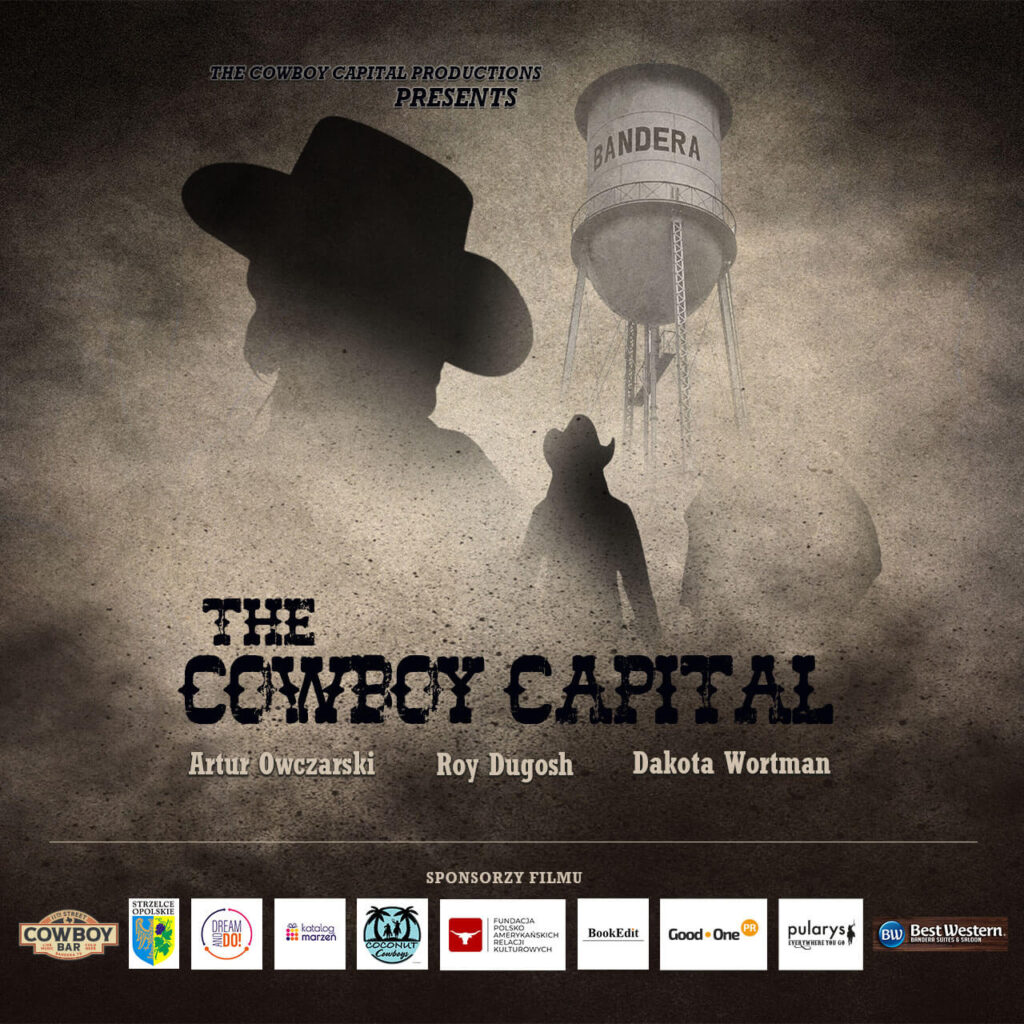
Artur Owczarski – journalist, writer, producer, and director of documentary films. He is the author of books about the USA, including Droga 66, Droga Matka. O historii, legendzie, podróży (Route 66, Mother Road: On History, Legend, Journey), Teksas to stan umysłu (Texas is a State of Mind), and Luizjańskie gumbo (Louisiana Gumbo). For many years, he has traveled the American South, giving voice to the residents of small towns and rural communities in his books. He writes about places and people that are off the beaten path, allowing readers to discover the American countryside. Owczarski portrays America not from the perspective of political debates or economic processes, but by describing the daily lives of extraordinary individuals. In 2019, he was awarded the title of Honorary Citizen of Bandera, Texas, the Cowboy Capital of the World. He has sailed through the swamps with hunters in Louisiana, listened to jazz and interviewed Grammy Award winners, talked with a Voodoo priestess in New Orleans, and documented the annual rattlesnake roundups in Sweetwater, Texas. He feels most at home in unconventional destinations—America far from the usual tourist trails—such as small local rodeos and cookoffs. Each trip to the U.S. covers thousands of miles, interviews with people, and observations on American culture. In 2023, together with Dakota Wortman and Roy Dugosh, he made the film The Cowboy Capital, which was shown at numerous film festivals, won several awards, and will be released globally in 2025. (Press materials).
Author’s website: www.owczarskiartur.pl
The film screening will take place during the Austin Polish Film Festival
on November 9, 2024, at 2:00 p.m.
More information available at: Austin Polish Film Festival